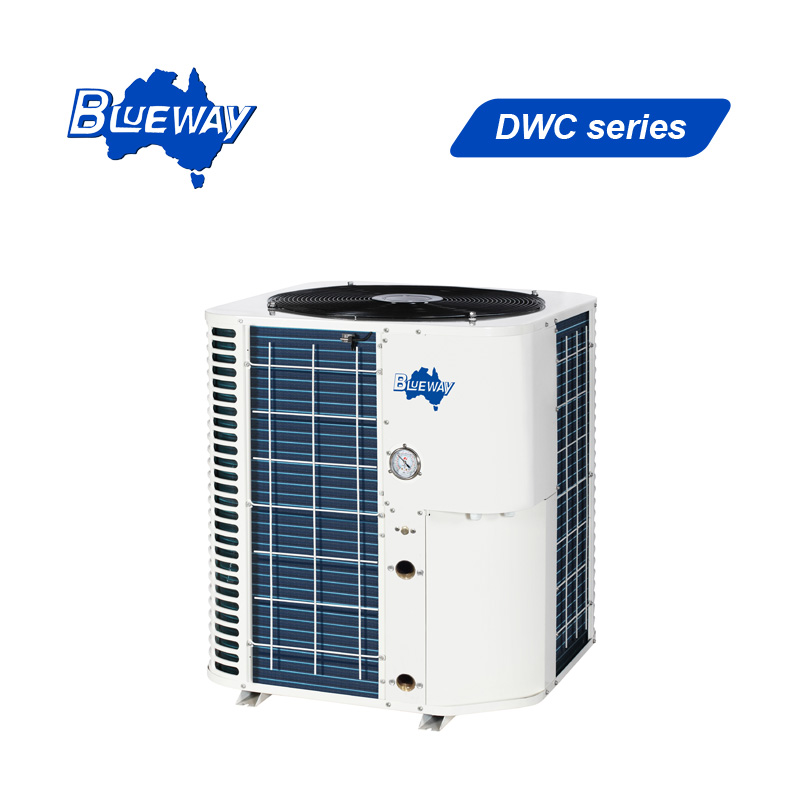How Can an Air Source Water Chiller Enhance Energy Efficiency and Cooling Performance in Your Facility?
2025-02-20
In today's rapidly advancing world of HVAC (Heating, Ventilation, and Air Conditioning) systems, maintaining optimal temperature control for industrial and commercial environments is a growing concern. Whether you're running a manufacturing plant, a data center, or a food processing facility, ensuring the right cooling system can greatly impact your energy costs, equipment lifespan, and operational efficiency. One solution that has gained popularity is the air source water chiller. But what exactly makes this system so beneficial, and how can it improve the performance of your cooling system?
What is an Air Source Water Chiller?
An air source water chiller is a type of cooling system that uses the surrounding air as a heat exchange medium to cool water, which is then circulated through a building or facility to regulate temperature. This system operates on a similar principle to air conditioners but is designed specifically for large-scale cooling needs, often found in industrial or commercial settings.
The chiller typically consists of a compressor, an evaporator, a condenser, and an expansion valve. The compressor compresses refrigerant gas, which is then cooled and condensed into a liquid. This liquid refrigerant absorbs heat from the water, which then circulates through the system to absorb excess heat and cool down the space or process.
How Does an Air Source Water Chiller Work?
The operation of an air source water chiller relies on the heat exchange process, where thermal energy is transferred from one medium (the water) to another (the air). Here’s a breakdown of how it works:
1. Air Intake:
The chiller’s evaporator absorbs heat from the ambient air. This is why the system is referred to as an "air source" water chiller—it uses the air to dissipate the heat. The temperature of the air will directly affect the efficiency of the unit. The cooler the external air, the more efficiently the system will work.
2. Cooling Process:
The refrigerant in the chiller absorbs the heat from the air and carries it through the system. The heat transfer process takes place in the evaporator coil, where the refrigerant turns from a liquid into a gas, pulling heat away from the water that will be cooled.
3. Condensation and Heat Transfer:
After the refrigerant absorbs the heat, it travels to the condenser. In this part of the system, the refrigerant gas is cooled and returned to a liquid state. The heat is expelled to the surrounding air, usually with the help of cooling fans.
4. Cooling the Water:
The cooled refrigerant is now passed through a heat exchanger that cools down the water circulating through the system. The chilled water is then used to cool the desired area, such as a commercial building or industrial machinery.
5. Repeat:
This process continues in a cycle, with the chiller constantly working to remove heat from the air and transfer it to the circulating water. The system operates until the desired temperature is reached and maintained.
What Are the Key Benefits of Using an Air Source Water Chiller?
1. Energy Efficiency:
One of the standout features of air source water chillers is their energy efficiency. These systems use ambient air to expel heat, which means they don’t require additional fuel sources or high-energy inputs to function. By leveraging the natural cooling power of the air, these chillers reduce energy consumption compared to traditional cooling methods like water-cooled chillers or HVAC systems that rely on mechanical refrigeration.
2. Environmental Benefits:
Since air source water chillers require less energy to operate, they produce fewer greenhouse gases and have a lower environmental impact. They also use refrigerants that are less harmful to the ozone layer compared to older systems. This makes them an eco-friendly choice for industries looking to minimize their carbon footprint.
3. Lower Operating Costs:
With reduced energy consumption comes lower operational costs. Air source water chillers tend to be less expensive to run over time, especially in areas with moderate climates where the temperature of the surrounding air is favorable. By reducing the overall energy bill, these systems are a cost-effective solution for long-term cooling needs.
4. Flexibility and Scalability:
Air source water chillers are versatile and can be used in a wide range of applications. Whether you need cooling for a small commercial space or a large industrial facility, there is a chiller model that suits your needs. Many units are also scalable, meaning you can add additional chillers as your cooling demands grow.
5. Simple Installation and Maintenance:
Air source water chillers are generally easier and less costly to install than water-cooled chillers because they do not require a separate water source, such as a cooling tower or large water supply. Additionally, these units tend to require less maintenance, as they are less susceptible to issues like water scaling, corrosion, and the need for constant water treatments.
6. Reliability:
Air source water chillers are known for their reliability. These systems are designed to withstand various outdoor conditions, from high temperatures to cold winters, making them a reliable choice for many industries. With proper care, these units can last for many years without major issues.
When Should You Consider Installing an Air Source Water Chiller?
Air source water chillers are ideal for a wide range of applications, but there are certain situations where they are particularly beneficial. Consider installing this system if:
- You Are Looking for a Cost-Effective Solution:
If your facility needs continuous cooling and you want to reduce your energy costs, an air source water chiller can provide an affordable and efficient solution.
- You Need a Flexible, Scalable Cooling System:
If your cooling demands fluctuate or grow over time, air source water chillers offer the flexibility to scale up or down as needed.
- You Have Limited Access to Water:
If your facility is in an area where water supply is limited or where water-cooled systems are not feasible, air source water chillers are an excellent alternative.
- You Are in an Area with Moderate to Favorable Climatic Conditions:
Air source water chillers perform most efficiently in climates where the outside air temperature is moderate, making them ideal for temperate regions.
Conclusion
An air source water chiller is a highly efficient and environmentally friendly solution for cooling in a wide range of industries. By utilizing the surrounding air to remove heat and circulate chilled water, these systems not only save energy but also reduce operating costs. They offer many benefits, from lower maintenance to reliable performance, making them a great investment for facilities that require consistent, large-scale cooling.



